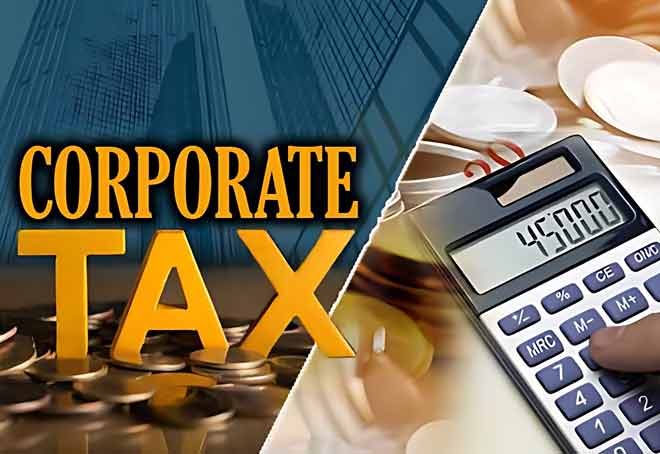For governments globally, corporate tax is one of the most important sources of revenue. It is a sort of direct tax that applies to the profits of businesses and other companies in a given jurisdiction. Although corporation tax rates and rules differ from country to country, the objective of business taxation is always the same: to support public goods and services.
Business taxation is an easy subject to learn. Both nationally and internationally, corporations are compelled to pay part of it. Corporate tax rates vary from country to country and from area to region. It is regarded as a vital aspect of any country’s economic plan and considerably determines the amount of tax money the government will ultimately get.
Generally, the profits of a corporation are utilized to compute corporate tax. Tax authorities must receive financial accounts from corporations, which are then used to compute the amount of tax payable. Generally, an organization’s taxable income is derived by deducting its expenses from its income. The tax administration determines the amount of tax to be paid by applying the tax rate to this tax base.
How to Calculate the Corporate Tax?
The corporation tax calculation is vital in running a firm to know how much money you owe the government in taxes. To compute company tax, perform these steps:
Taxable Income to be Calculated
First, the company’s tax base must be calculated. Net income equals the company’s net profit for the year after deducting the cost of goods sold, operational expenses, and other deductions.
It is crucial to precisely determine the taxable amount to prevent any penalties or penalties for late payments.
Set the Tax Rate
After determining the tax base, the next step is to know the corresponding tax rate. The tax rate varies depending on the business structure and the nation or state of residency.
For example, C businesses in the United States pay a 21% corporate tax rate, whereas S corporations and partnerships are taxed at the owners’ income tax rate.
Determine the Tax Payable.
The company’s tax liability should be estimated as the last stage. In short, it arises from the tax rate and the taxable income.
For example, the tax payable would be $21,000 if a corporation had a taxable income of $100,000 and the tax rate was 21%.
How do Firms Save Their Tax Obligations?
Entrepreneurs have to pay a tax on their profits called corporation tax. The amount of tax paid is dependent on the country in which the firm is headquartered and can greatly affect the financial health of the business.
Businesses have legal means to pay less tax, even though taxes are needed to fund government expenditures and programs. Here are some ways to save company tax:
Use Tax Deductions to your Advantage.
A tax deduction is one of the easiest techniques to decrease business taxes. A firm can claim a tax deduction as an expense to lower its taxable income.
Employee pay, rent, and the cost of office supplies and equipment are some instances of specific tax deductions.
Businesses may guarantee that they take full advantage of all permissible deductions and eventually lower their tax burden by keeping thorough records of all expenses.
Create a Company in an Advantageous Tax Country.
You can also decrease your company tax by starting your business in a country with favourable tax regulations. Tax-friendly nations have low business tax rates or offer corporate tax benefits.
For example, Singapore has a 17% lower corporation tax rate than many other countries. Businesses can minimise their tax burden and gain income by incorporating in a low-tax country.
Work with a Tax Specialist.
Understanding and handling tax regulations can be tough. Businesses can be sure they are optimising all chances for potential tax savings by engaging with a tax specialist.
Tax specialists can assist you on tax deductions, tax credits and other tax-saving methods. They can also help firms keep up to date with changes in tax legislation that may influence their profitability.
Spend Money on Research and Development.
Governments often grant tax benefits to corporations who spend money on research and development. Companies who invest in R&D raise the quality of their goods and services and pay less tax.
For example, corporations can use the US Research and Development Tax Credit, which allows them to claim a tax credit for certain R&D expenses.
Use Tax Credits to your Advantage.
The usage of tax credits allows corporations to minimise their corporate tax. Tax credits are direct reductions in a company’s tax burden that can be claimed for certain actions or expenses.
Companies can claim tax credits, for example, if they invest in sustainable energy or recruit veterans. Businesses can lower their tax bills by studying and learning about possible tax incentives.
Make Plans
The third way corporations can decrease their corporate tax is to be prepared. Businesses can choose the most effective tax-saving solutions to apply when predicting their income and expenses.
For example, investing in equipment or other tax-deductible expenses may be helpful if the company anticipates a big tax payment in the current year. Businesses can take advantage of tax savings opportunities early by preparing in advance.
Conclusion
For governments globally, corporate tax is a key source of revenue. By providing businesses with a safe and predictable environment in which to operate, taxes help sustain public goods and services and stimulate company growth and development.
However, a well-designed corporate tax system can assist economic justice and efficiency by more equitably dividing the costs and benefits of delivering public goods and services.






